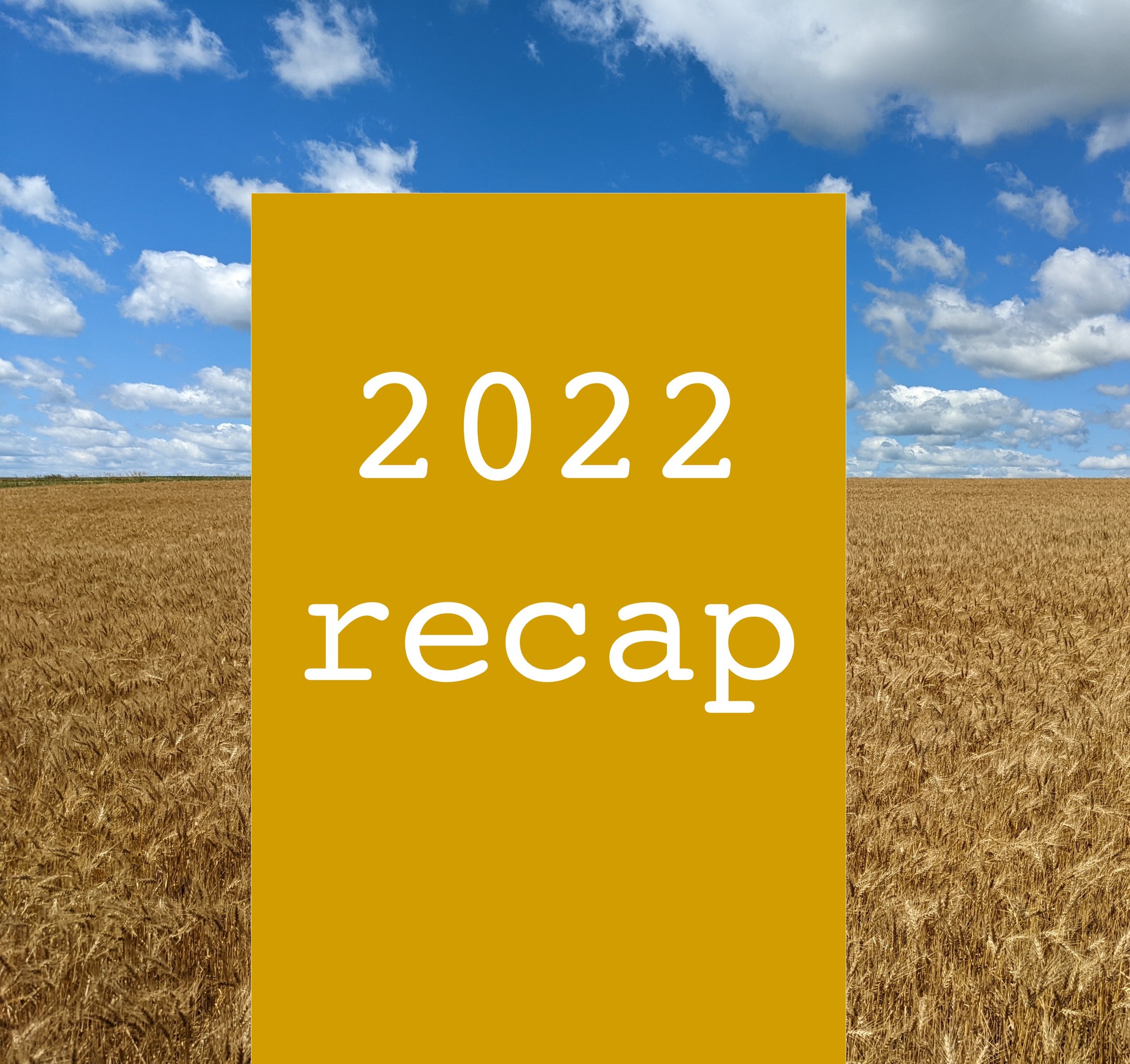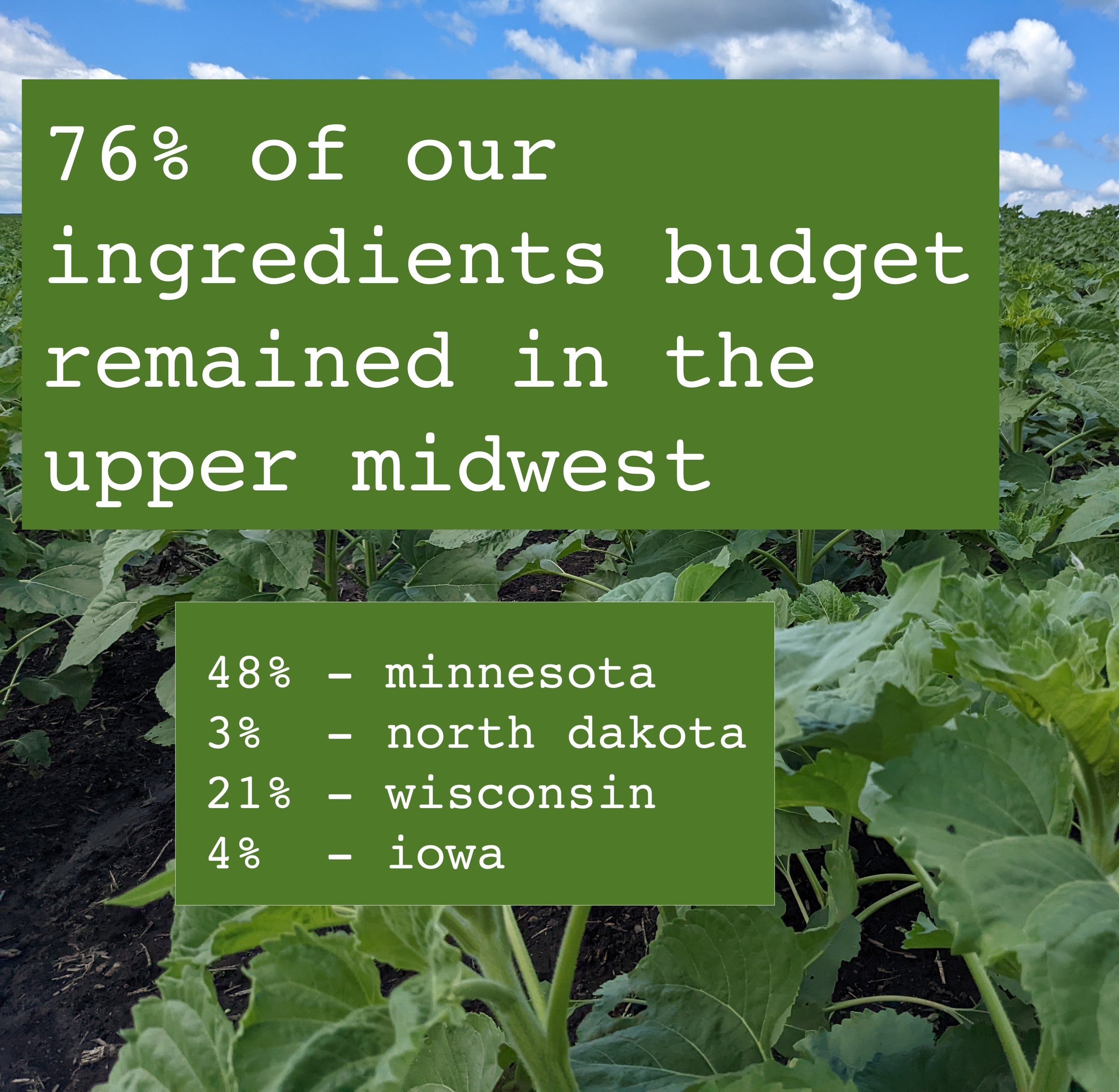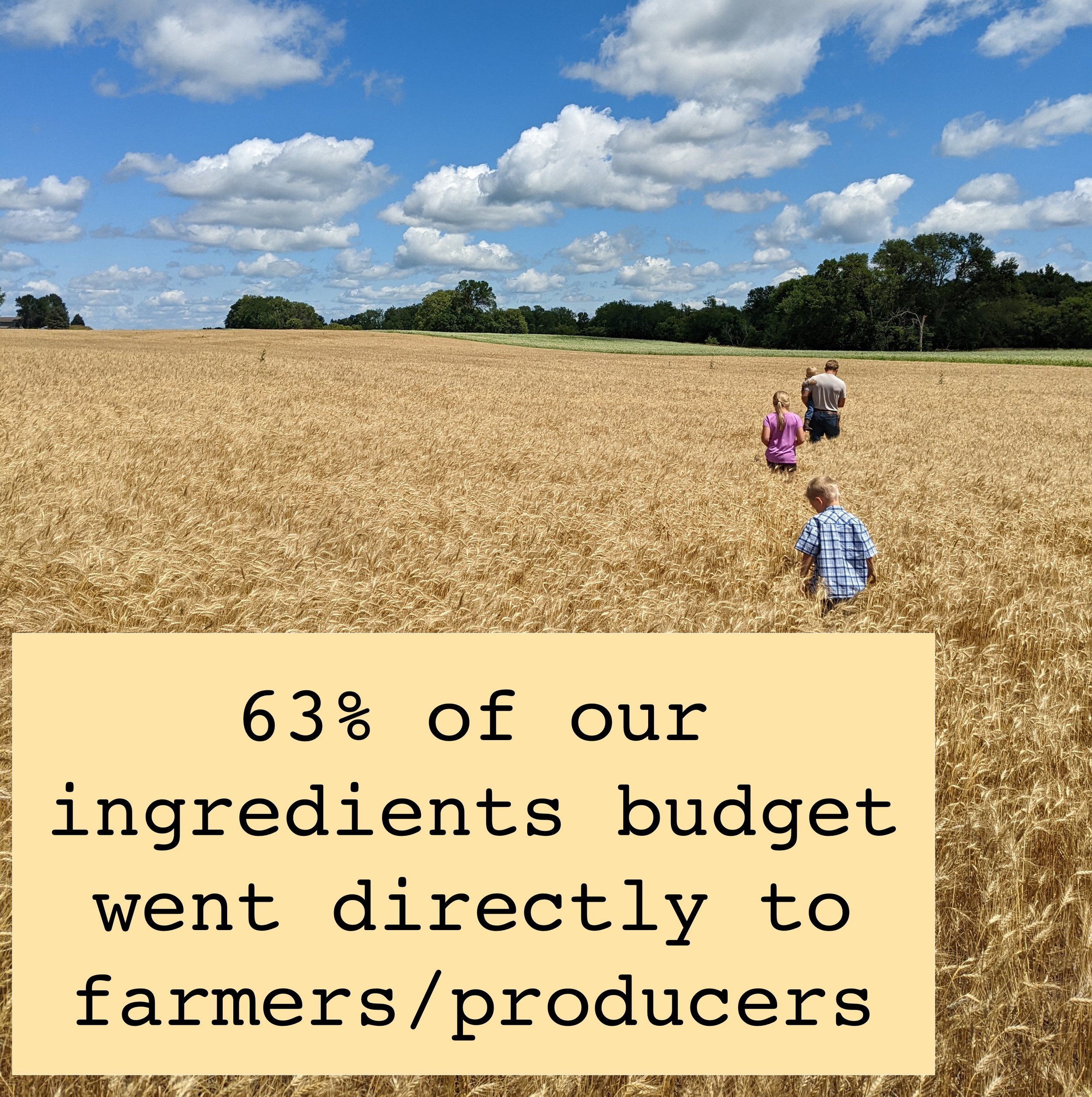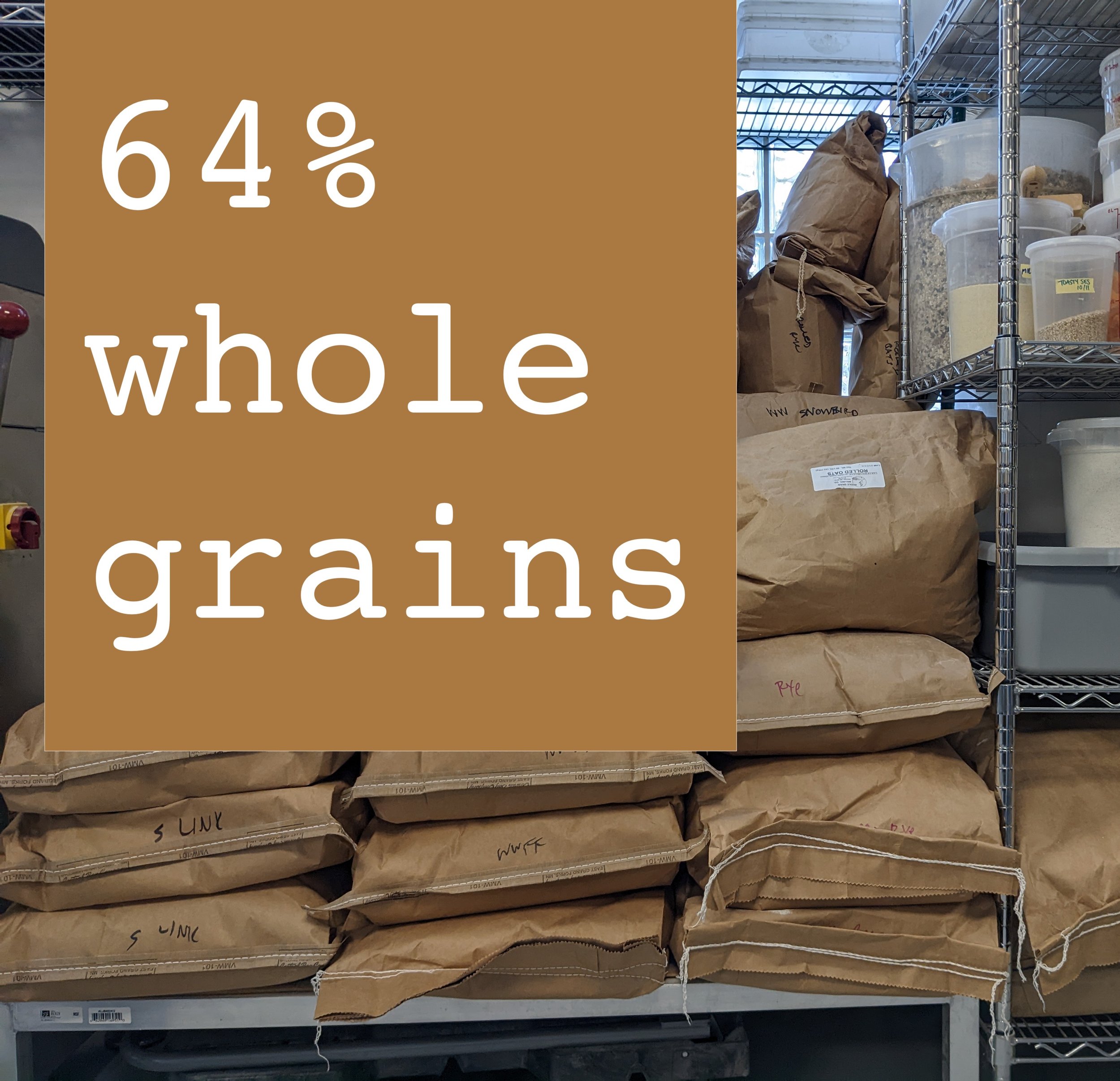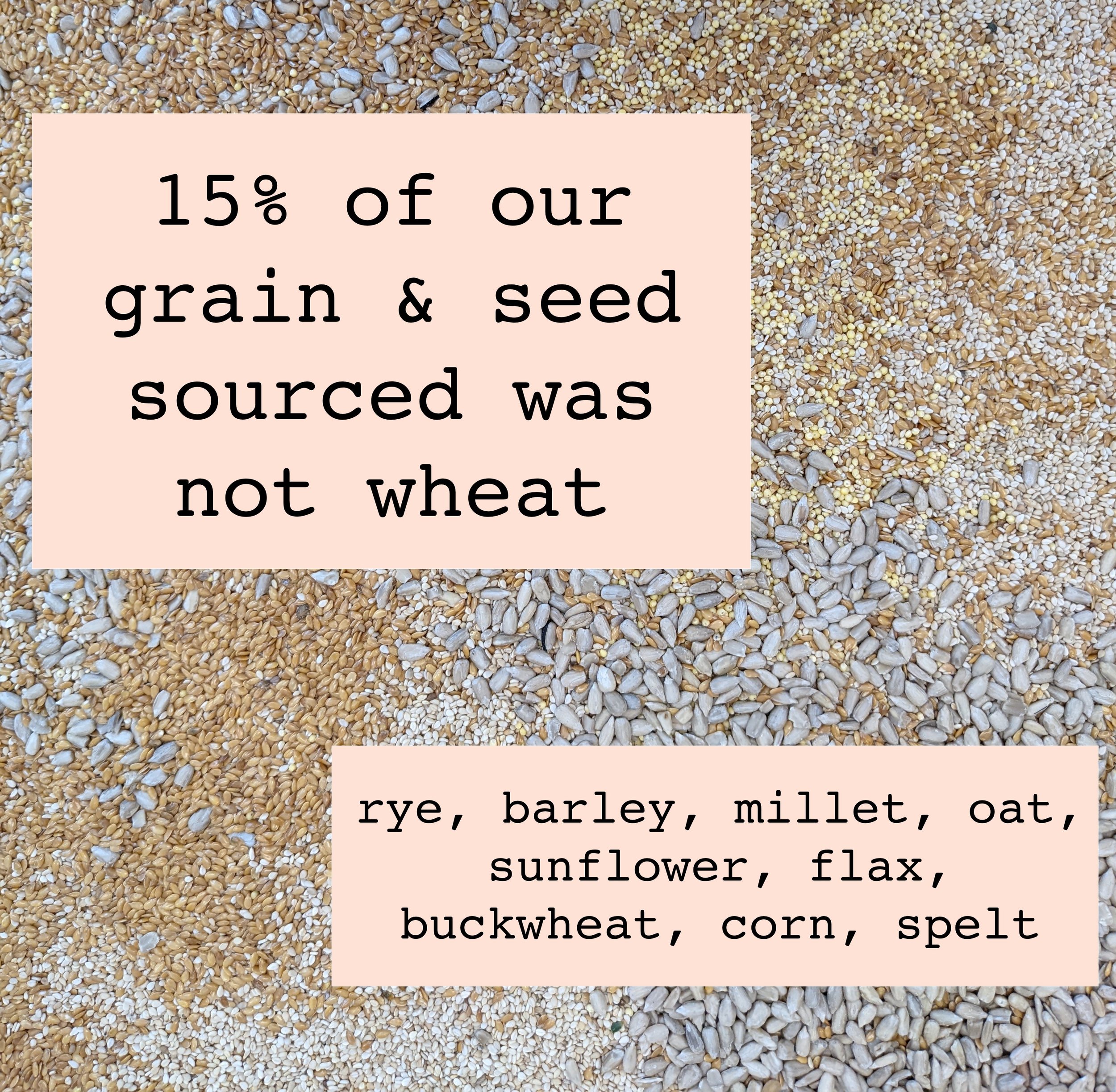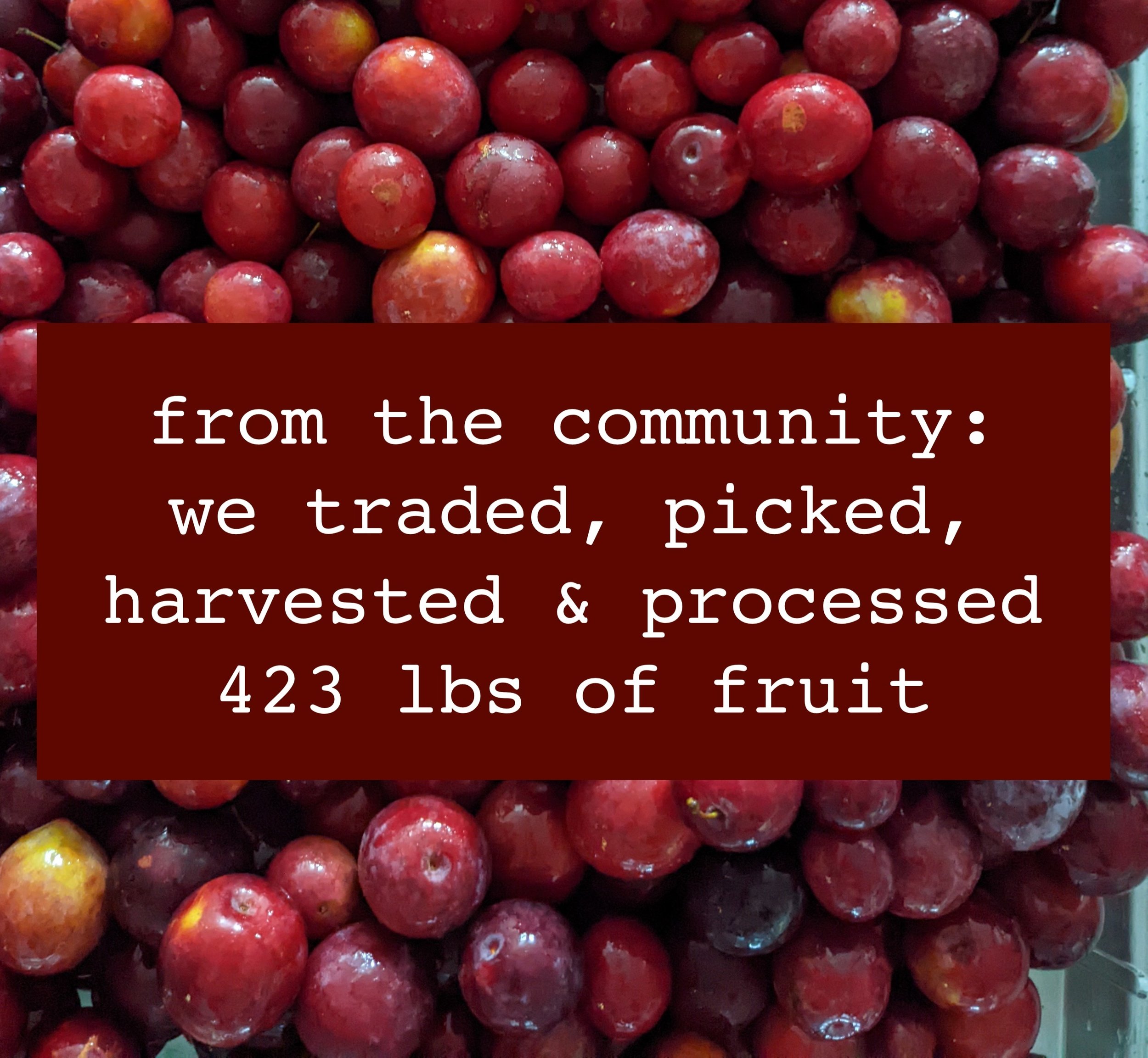Cultivate from what is around you
Hey everybody, it’s Chris the Baker, writing in January 2023.
Sometimes I don’t know how to define Laune Bread. It’s not quite simple, because a reductionist approach is glossing over a lot, and I prefer to be particularly clear about what we are doing.
We work in a sphere of dangerous, tricky, nice sounding, feelgood words. Words that are co-opted for marketing purposes. Words that define a business, that in turn cannot meet their own benchmark. Words are easy to write, to speak. The reality is harder to come by.
Sustainable. Local. Organic. Farmer XYZ. Hand Made. Regenerative. Artisan. Zero Waste. Upcycle.
Laune Bread encompasses these words, and it is important for us to know in what regard we are.
Laune Bread is a German bakery that deviates from traditional german baking techniques and recipes. Laune Bread is a local bakery: 75% of our ingredients budget remains in the upper midwest. Laune Bread directly supports farmers and producers, to the tune of 63% of our ingredients budget. Laune Bread is an organic bakery, and we source some conventional products intentionally - brown sugar & butter (cost), sunflower oil & cream cheese (local versus organic), transitional grains, as some examples. Laune Bread sources most of its flour from Minnesota, and currently we source ~3% from North Dakota’s Red River Valley, ~2% from Illinois, and ~8% from the Driftless Region of Wisconsin. Laune Bread is a sourdough bakery, and our croissants and brioche are yeasted. Laune Bread is a whole grain oriented bakery, averaging 36% sifted flour.
Every quarter I scan through all our invoices to do an internal audit, accompanied by spreadsheets which are now forever part of my life. Quarter to quarter, year to year, the statistics don’t really change that much. Our consumption of ingredients has been growing, but for the most part the key numbers hover within a 5% range.
So, without further adieu, LET’S DO THE 2022 NUMBERS, with Kai Ryssdough.
The newest statistic is wheat versus non-wheat grains. This year I had the realization that we are still a monocrop supporting business. I don’t think it is truly realistic for our bakery to escape that reality, but we can, and should, reduce it. Diversity in life is key, and on a regenerative grain farm it's especially important for soil health, and to support that, you have to be the marketplace for the diversity of grains . Luke Peterson, of A-Frame Farm, rotates his fields with wheat, kernza, sunflower, buckwheat, corn, golden flax, tillage radishes, and fallow fields. He already has a customer for each crop he rotates through, so we are primarily using his wheat and golden flax. So we source our adjunct grains from Whole Grain Milling in southern Minnesota and Meadowlark Mill in the Driftless region of Wisconsin.
When people talking about soil health, it seems like an interchangeable conversation related to gut health. Increasing diversity of grains is extremely positive for your gut health - habitual consumption of whole grains increases longevity, active life span, and maintains gut barrier integrity. More resiliency on the fields, more resiliency in your gut.
This summer we started incorporating 4% barley flour and 10% rye flour into all of our wheat-based breads, and replaced a portion of wheat with a blend of rye, millet, barley and buckwheat flour into some bread and pastries. And it's common for a Baker’s Whim to be chock full of various grains, whether as flour, rolled, chopped, or whole.
In an interview last year regarding Kernza, I was asked “in what community does Laune Bread exist,” and I sat there in silence for a long time. I didn’t come up with an answer, but it prompted me to make this most convoluted chart (work in progress), where I came to realize that I could count how many people we are directly supporting. To clarify, this is only to a certain extent, as I don’t know exactly how many people work at each farm or business, so it is potentially more.
The chart helped me fully grasp a concept I have slowly been leaning into for a long time - “what does it mean to be a local business.” I can name about thirty people that our dollars go directly to, and know that they have additional staff adding up to at least 66. I can name thirty people I have a relationship with, and knowledge of how their ingredients are grown or processed. And they are all within a four-hour drive of the bakery. I’ve seen their farms, met their families, shared bread, and importantly, learned how they are cultivating the land. In some instances, it is as easy as looking at their soil and a conventional farming neighbor, side by side.
So, another statistic I added is dollars directly to farmer/producer. Some ingredients are straightforward, like herbs, kale, tomatoes from Kelsey at Heirloomista. Ingredients like flour mean that the money we spend goes to the mill, but we know the farmers that grow our grain, how they are valued by the mills, and that there are no grain brokers in the deal.
Additionally, we are tracking of how we participate in the Longfellow, Seward and greater neighborhood communities. 423 lbs of fruit - rhubarb, sour cherries, tomatoes, and more.
And thanks to the support of individuals to help offset our costs, we have donated 1489 loaves of Bread Bread since spring 2020. Quality food accessibility remains important to us, and we are continuing to explore this intentional, integrity-based form of bread donation, specifically in our locale, and are hoping to expand more widely in 2023.
Laune is, relatively speaking, a pretty tiny bakery. Last year we consumed 24,000lbs of organic flour. According to Luke Peterson, his average organic regenerative farming yield for wheat in 2022 was about 30 bushels per acre. One bushel of wheat equates to sixty pounds of whole wheat flour, and when it’s sifted, 50 pounds. So in 2022, we consumed ~15-20 acres of farmland, or the equivalent of three to four city blocks. One acre of organic wheat contains around 30 million individual kernels of wheat, if you need a new trivia fact.
Whole grain flour has more nutritional value and more flavour, digests more slowly, and is inherently less wasteful than sifted/white flour. There is no byproduct that is composted or fed to animals. We are continually increasing the percentages of whole grains into all our products while maintaining quality texture and loft. It is a balancing act. Whole grains require more effort to achieve a soft crumb (interior), that is not dense. We blend sifted flour and whole grain flour to achieve the flavour, nutritional, and environmental effects of whole grain flour with a beautiful and custardy crumb. The perception of brown bread in this country is pretty bad, so we are trying to change that just slightly.
In 2019, Bread Bread was 50% whole grain, and it is now 62.7%. Croissant was 38%, now it is 50%.
It is truly astonishing that we are continually able to source ~76% of our ingredients budget for the Upper Midwest. In 2020, it was 79.25%, in 2021 it was 76.68%. This was something I was uncertain we would maintain in establishing a brick and mortar. In 2020 and 2021, we were primarily baking bread, with a small fraction of our sales being pastry items with sugar, nuts, chocolates, citrus, grown outside of our region.
We’ve been able to accomplish our sourcing in a few ways:
Reducing percentages of sugars in our products - we want to showcase the grains we are using, and the techniques behind those products.
Adapting recipes to fit our region - frangipane with flaxseed instead of almonds, romesco with sunflower instead of almonds, utilizing local sunflower oil & sorghum syrup, Building new connections for more local fruits & veggies. Baking within season, utilizing storage crops, canning, and freezing produce and vegetables.
Purchases from local fruit & vegetable farmers has increased significantly, primarily because we have the capacity to utilize locally grown, perishable foods all year. We purchased 588% more local produce in 2022 than the year prior. Local produce is utilized for bread incorporations (Apple Flax, Squash Millet), for sandwiches, our puff fillings (both sweet and savory), croissants, kolaches, and jams.
So with all this in mind, what are our goals for 2023?
Keep doing what we are doing or find ways to do more of it. Continue to grow so we can have a bigger impact on our farmers and producers. Find more ways to make this bakery more sustainable for us. And ultimately, it’s not just about us. We want the food industry to change, and it might just have to be through consumer awareness and expectations, because what if every bakery and restaurant sourced more locally and intentionally, with more integrity?
Farmers, Producers, Suppliers :
Baker’s Field Flour, Minneapolis, MN - flour
Whole Grain Milling, Welcome, MN - grain & seeds
Meadowlark Community Mill, Ridgeway, WI - Polenta, beans, corn
Askegaard Organic Farm, Moorhead, MN - Golden Flaxmeal, wheat
A-Frame Farm, Madison, MN - Golden Flax, wheat
Maltwerks, Detroit Lakes, MN - Malted Barley Flour
Racing Heart Farm, Menomonie, WI - vegetables
Clover Bee Farm, Shafer, MN - vegetables
Heirloomista, Shafer, MN - herbs, vegetables
Foxtail Farm, Osceola, WI - vegetables
Mary Dirty Face Farm, Menomonie, WI - apples
Stone Creek Farm, Shafer, MN - stone fruit
Peter’s Pumpkins and Carmen’s Corn, Shakopee, MN - vegetables
Skinny Jake’s Fat Honey, Shafer, MN - honey
Smude Sunflower Oil, Pierz, MN - sunflower seed oil
Wittgreve’s Rolling Meadows, Elkhart Lake, WI - Sorghum Syrup
Larry Schultz, Owatonna, MN - eggs
Grassland, WI - Wüterich high fat butter
Autumnwood Farm, Forest Lake, MN - milk & cream
Kalona, Kalona, IA - buttermilk
Northerly Flora, Minneapolis, MN - flowers
Mellifera Flowers, Shafer, MN - flowers
SK Coffee, St. Paul, MN - coffee
Coop Partners Warehouse, St. Paul, MN - sugar, dairy, stone fruits
Bergin Fruit & Nut, St. Paul, MN - dried fruit, nuts, coconut, sugar
Great Ciao, Minneapolis, MN - chocolate, butter
Frontier Coop, Norway, Iowa - herbs & spices
Equal Exchange - chocolate chips, cocoa powder
Wholesome, Sugarland, TX - molasses

